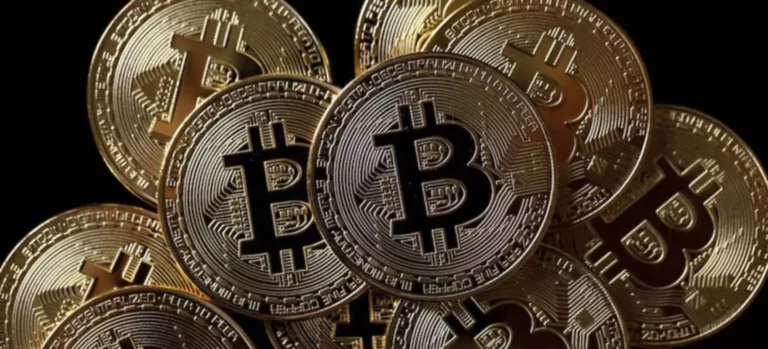Content
The fund’s operating expenses embody spending on administration, management, and advertising. For a abstract of the dangers of an funding in BMO Mutual Funds or BMO ETFs, please see the specific risks set out within the Constant function market maker prospectus of the related mutual fund or ETF . Expense ratios are supposed to make it easy to compare the costs of various ETFs on a like for like basis.
Compounding fees reduce returns

Their aim is to provide an investor with exposure to a particular segment of the market in an attempt to return the average for that market. On the other hand, an ETF that holds etp vs etf shares in a niche index will have fewer buyers and sellers active, and the issuers and market makers will have little incentive to keep the spread narrow. She’s been teaching courses in investing and personal finance at the University of Toronto’s continuing studies department since 2004. Her specialties are learning how to invest for beginners and how to become a smart consumer.

What to Consider When Choosing Between ETPs and ETFs
Investors should pay attention to the tracking error of an ETP as it can impact the overall returns. Mutual funds charge their shareholders for everything that goes on inside the fund, such as transaction fees, distribution charges, and transfer-agent costs. In addition, they pass along their capital gains tax bill on an annual basis. These costs decrease the shareholder’s after-tax return on their investment. On top of that, many funds charge a sales load for allowing you the pleasure of investing with them. On https://www.xcritical.com/ the other hand, ETFs offer more trading flexibility, generally provide more transparency, and are more tax efficient than mutual funds.
Breaking Down Fees: ETFs vs Mutual Funds
He began his trading career as an options trader on the floor of the Toronto Stock Exchange with RBC. Graham and his wife, Michèle, are the founders of Ready, Set, Play Children’s Charity which is a Toronto based charity that provides funding for underprivileged children to participate in recreational sports and dance. For a summary of the risks of an investment in BMO Mutual Funds or BMO ETFs, please see the specific risks set out in the prospectus of the relevant mutual fund or ETF .
Understanding the Impact of Banking Pulse on the…
These are levied on both, ETFs and Mutual Funds but form a very small part of the overall fee. Your broker also charges certain fees for its services, called brokerage charges. The average brokerage charge on purchasing ETFs is 0.01% of the turnover value. Discount brokers are set up for online trading, however if you want to trade over the phone you can. While online trades typically cost $4.95 to $6.95, broker assisted trades will cost $20 to $45 at most of the well-known brokers.
His focus is on elementary macro research and the implications for the ETF market place, including economic, financial and monetary policy analysis alongside developments in funding and liquidity. Prior to joining Digital asset BMO GAM, Bipan spent thirteen years as a top-ranked strategist at a large Canadian supplier. There are certain charges that the SEBI levies on the purchase of stocks from an exchange. Since ETFs also trade like stocks and are listed on the exchange, ETFs attract such charges from SEBI. Apart from that, STT stands for Securities Transactions Tax and stands at 0.01% of your turnover value.
- Minimizing tracking error helps to build investor confidence in the ETP’s ability to replicate the benchmark index accurately.
- Among ETPs, exchange-traded funds (ETFs) are the best known, and provide flexibility, price efficiency, and relatively lower charges.
- With 30 years of industry experience, Larry is a is a co-founder, partner and chief investment officer of ETF Capital Management and co-founder of Quintessence Wealth.
- Generally, the more active and complex the ETP, the higher the management fee.
- He is an alumnus of John Molson School of Business, Concordia University with a BComm in Finance and Management Information Systems.
- ETPs offer investors an efficient means of gaining exposure to diverse assets traded on stock exchanges.
- Exchange-traded funds generally offer higher liquidity than other ETPs due to broader market appeal and higher trading volumes.
Understanding the impact of market conditions on tracking error is vital for investors to make informed decisions. Alfred Lee is a portfolio manager and investment strategist at BMO ETFs, where he currently leads the index equity team, a team which currently manages some of the largest ETFs in Canada. In addition to his portfolio manager duties, Alfred also serves as the investment strategist for the team, putting together trade ideas and model portfolios for institutional and retail clients. Prior to joining BMO, Alfred worked at two other Canadian banks as a research analyst, focusing on macro-economics and ETFs and also worked in an institutional consultant practice of a major bank.
For instance, ETNs operate as unsecured debt securities issued by financial institutions, subjecting them to credit risk in case of issuer default. As a result, the SEC closely monitors ETNs, focusing on diversification and tracking error risks. While both ETNs and exchange-traded funds fall under the ETP category, the SEC tailors its regulatory approach based on the unique characteristics of each structure to safeguard investors.

As a debt instrument, ETNs carry credit risk should the issuing institution default. As a result, the SEC monitors ETNs more closely than it does the diversification and tracking error risks of ETFs. While both are ETPs, the SEC tailors its approach based on each structure’s characteristics to safeguard investors. For example, ETNs operate as unsecured debt securities issued by financial institutions. SPDRs paved the way for the ETP industry by proving the appeal and feasibility of packaged financial products that supply diversified exposure to indexes through a publicly traded security.
Knowing an ETF expense ratio and other potential costs can go a long way toward helping an investor understand their total costs for investing in the fund. A higher expense ratio means a larger portion of the fund’s returns is being used to cover expenses. Over time, these costs can significantly eat into the overall returns generated by the ETP. For instance, consider two ETPs with identical performance but different expense ratios. The one with a lower expense ratio would likely provide higher net returns to investors. Chris has over two decades of experience in the investment industry and currently serves as portfolio manager for derivative-based and equity-based portfolios.
Commodity ETFs are considered equity products and are regulated like mutual funds and other ETFs. This reduces not only immediate returns but also the future growth potential of your portfolio. Lowering fees keeps more money in your account, allowing compound interest to work in your favour. Imagine an initial investment of USD 100,000 with an annual return of 8%, compounded over 30 years. Bipan Rai joined BMO Global Asset Management in 2024 and at present serves as Head of ETF Strategy, delivering strategic analysis for the ETF and Structured Solutions staff. He is very regarded for his macroeconomic insights in addition to his data of market structure for numerous asset courses.
The expense ratio is also expressed as a percentage of the NAV of the ETP. For example, if an ETP has a NAV of $100 million, a management fee of 0.5%, and other fees and expenses of 0.1%, the expense ratio will be 0.6%, and the total annual cost of owning the ETP will be $600,000. Bid-ask spreads play a crucial role in the creation and redemption process. The bid price represents the highest price a buyer is willing to pay, while the ask price represents the lowest price a seller is willing to accept. The difference between these two prices is the bid-ask spread, which represents the transaction cost for executing a trade. APs need to consider the bid-ask spreads of the underlying securities when creating or redeeming ETP shares to ensure cost-efficient execution.
Greg started his career at Bank of Montreal and has held various investment roles including high yield debt analyst and portfolio manager in a fixed income investment management group specializing in credit risk assets. Omanand is a portfolio manager on the BMO ETF team focusing on equity, derivatives-based and multi-asset portfolios. He also helped develop new innovative solutions and manage option strategies. He holds a Bachelor of Mathematics from the University of Waterloo and is a CFA Charterholder. The expense ratio is typically expressed as an annual percentage of the total assets under management (AUM) and is deducted from the ETF’s net asset value (NAV).
Graham joined the TMX after an 18 yr career as an equity dealer that included managing multiple trading businesses. Prior to CIBC, Graham worked at RBC Capital Markets the place he was a pioneer within the Canadian portfolio buying and selling business. Entry load is the commission paid by the investor to the fund manager for participating in that fund. Some brokers no longer charge commissions or specifically offer commission-free ETFs. But the availability of these depends on both the ETFs “sponsor” and the brokerage or platform used to buy and sell the funds.




No Comments
Leave a comment Cancel